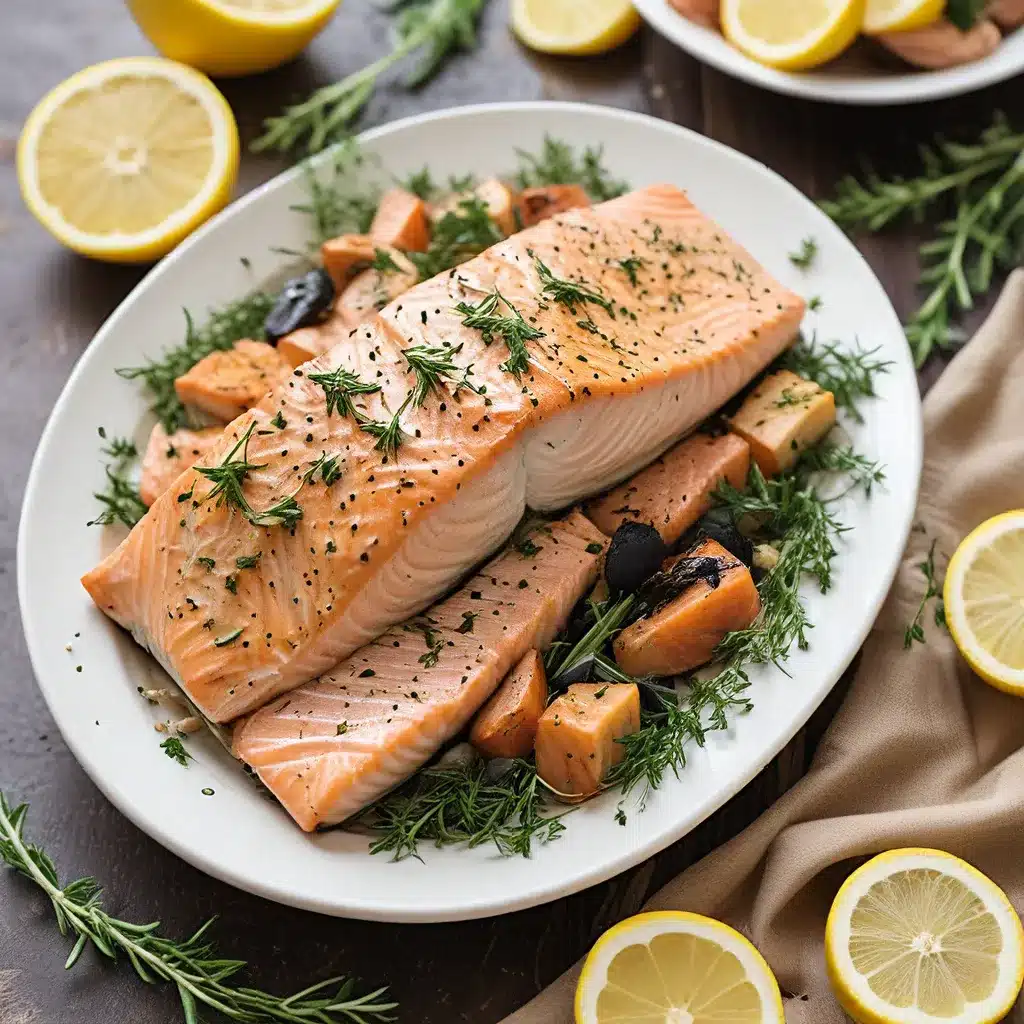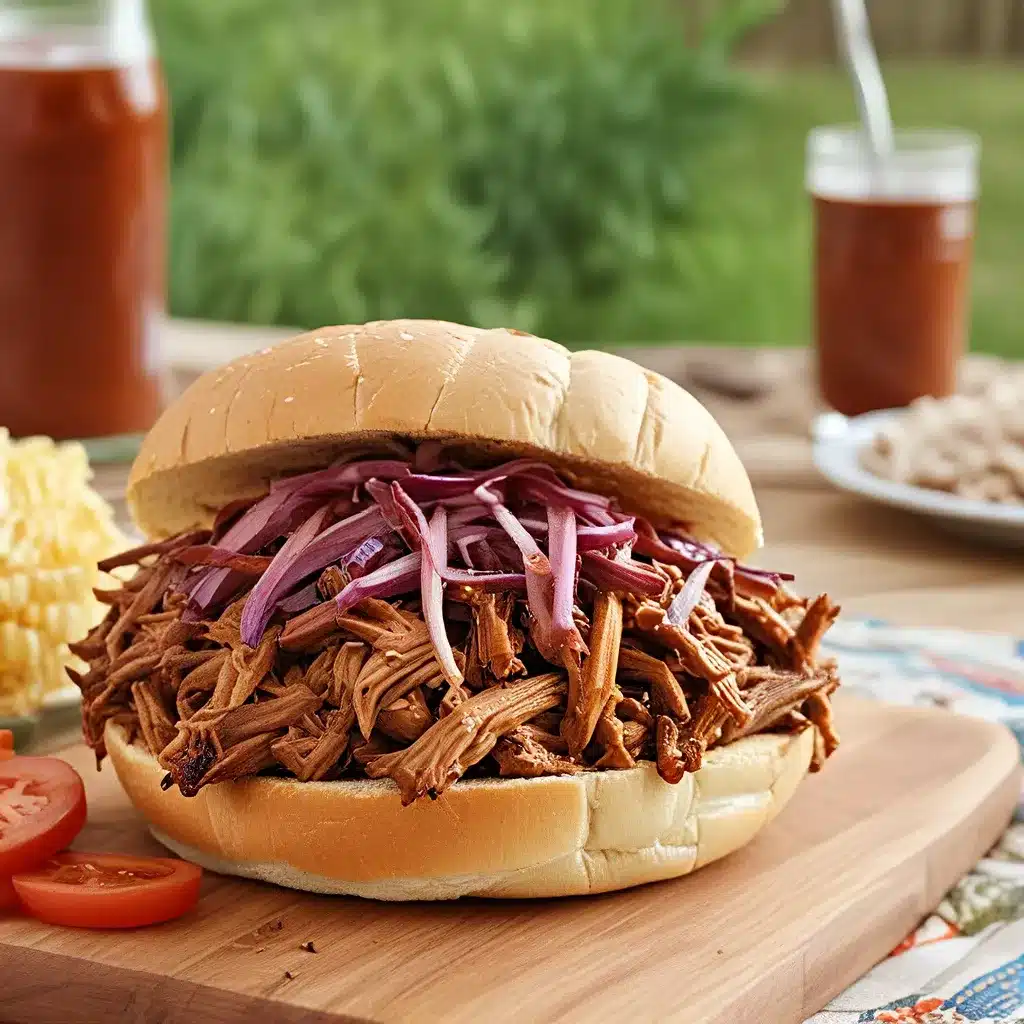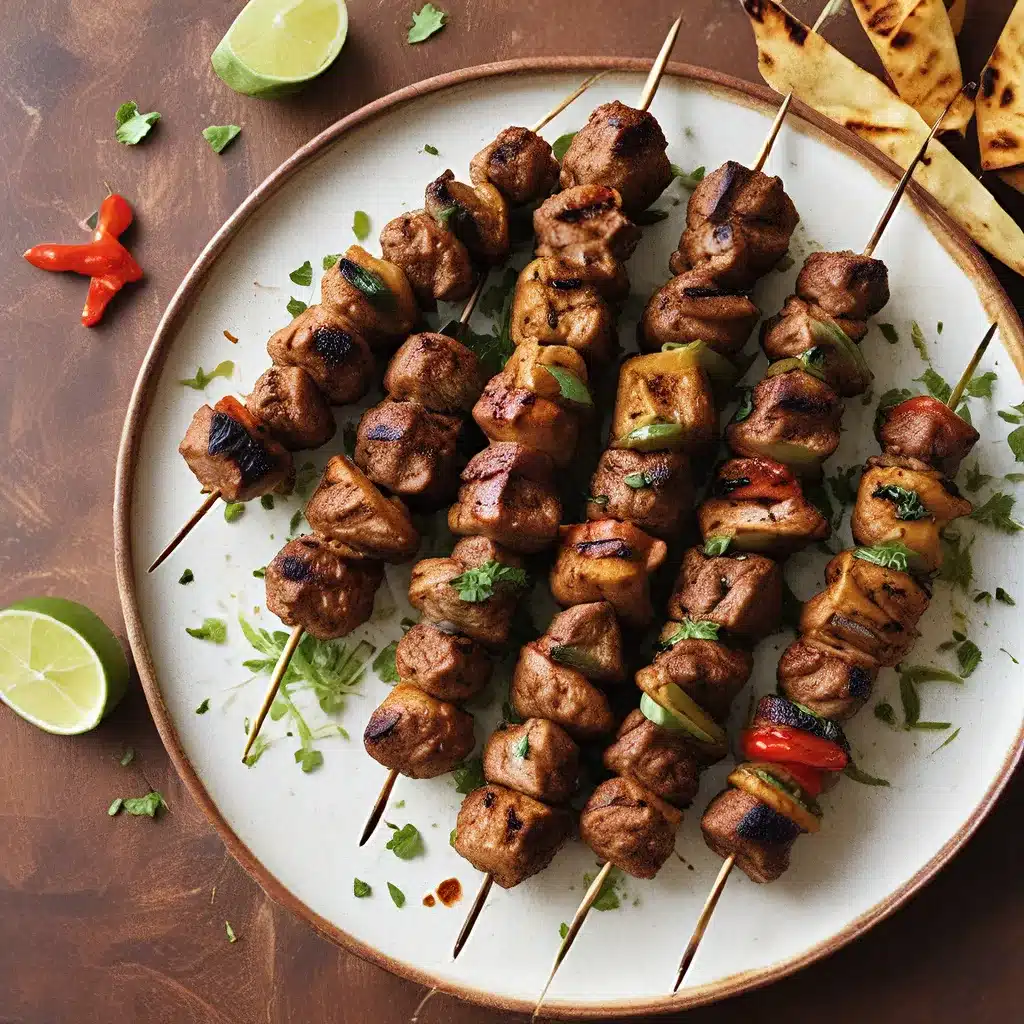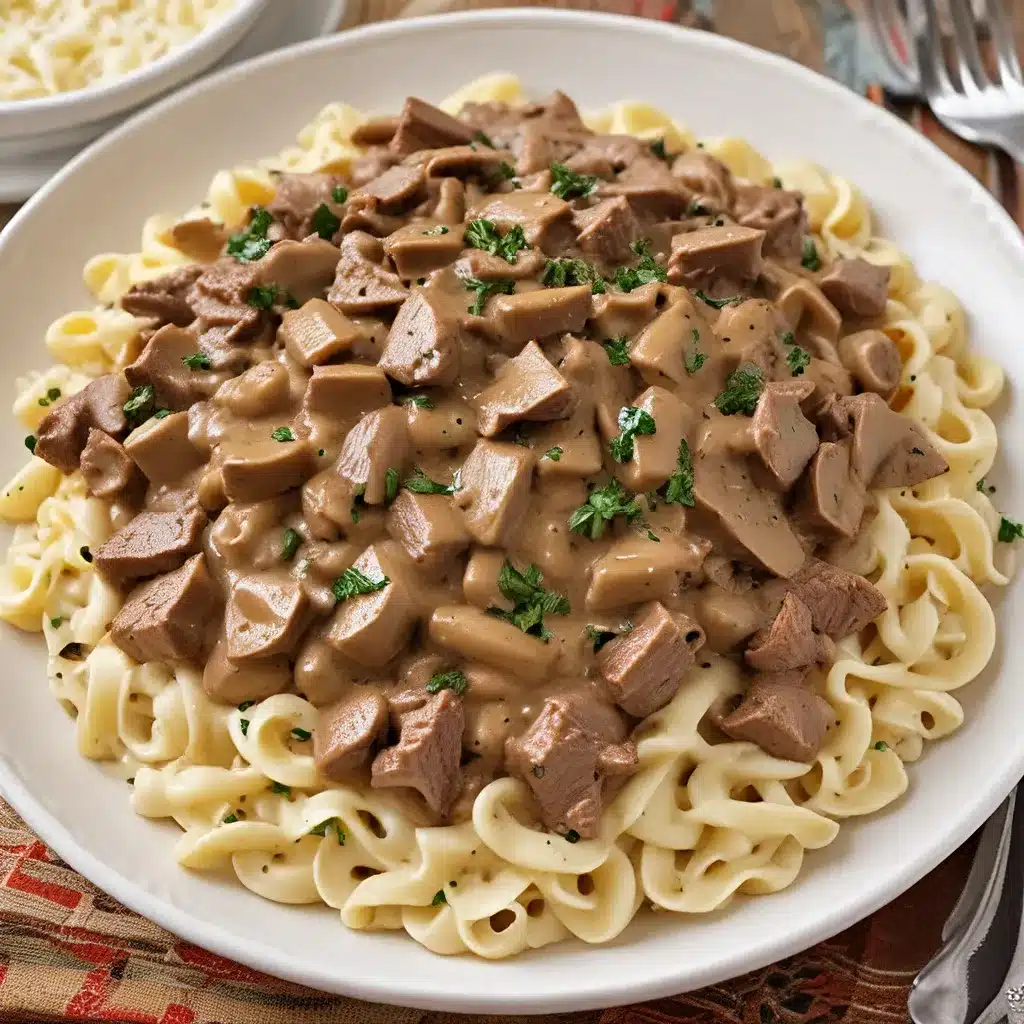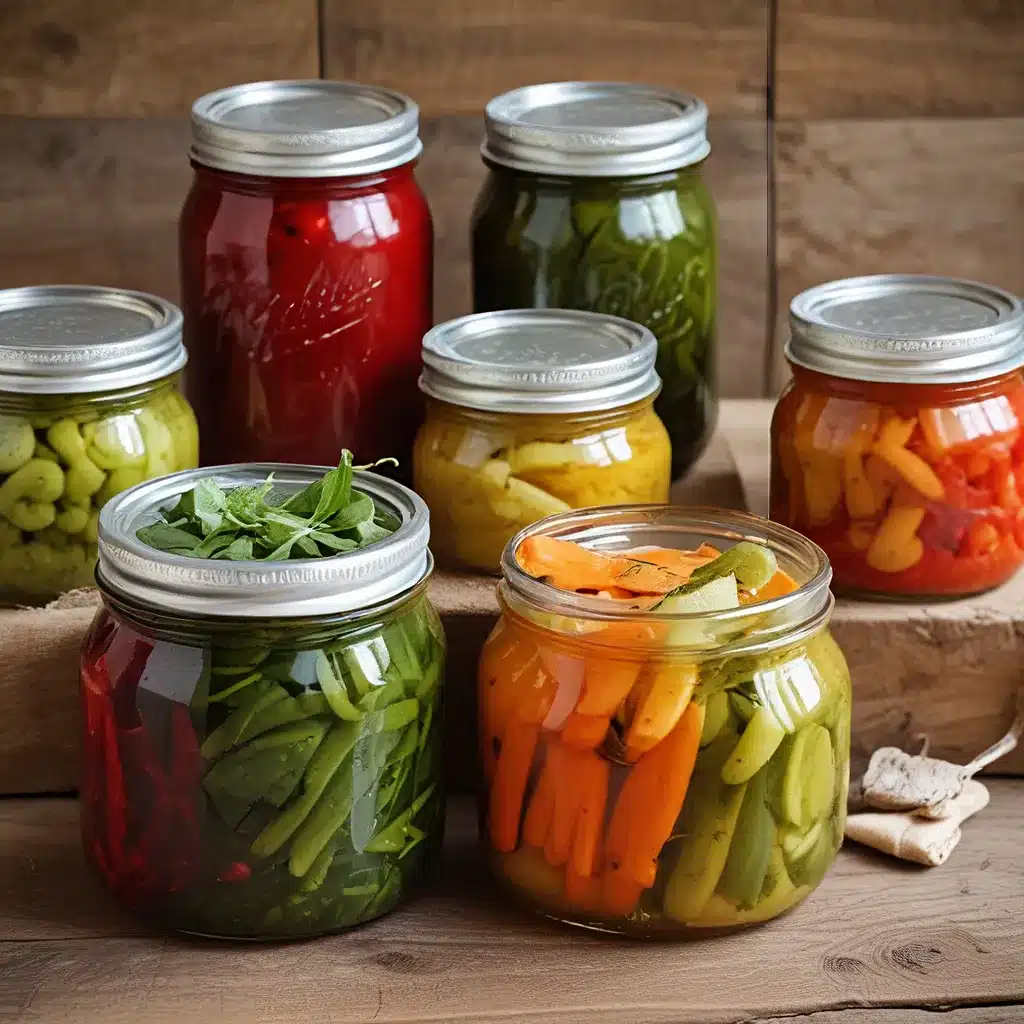
Ah, the joys of a bountiful harvest! Whether you’re a seasoned gardener or a farmers market enthusiast, there’s nothing quite like the feeling of your hard work and green thumb paying off. But as the saying goes, “all good things must come to an end.” Or do they? With the wonders of canning, pickling, and fermenting, you can preserve the flavors of your harvest and enjoy them all year round.
Pickling Prowess: Extending the Life of Your Bounty
Pickling is one of the most versatile and time-honored preservation techniques at our disposal. As I learned from the folks over at Twice as Tasty, pickling allows you to extend the life of almost everything you grow. Whether you’re dealing with a surplus of cucumbers, an abundance of peppers, or a cornucopia of carrots, pickling can be your ticket to enjoying that fresh, garden-grown flavor well into the off-season.
The beauty of pickling is that it can be done in a flash or given time to slowly work its magic. You can whip up a batch of quick pickles and enjoy them in a matter of hours, or you can let those jars sit and ferment for weeks, allowing the flavors to deepen and evolve. The key is understanding the pH balance and how to safely preserve low-acid foods.
Sierra Harvest explains that most pickles are made from produce that is naturally low in acid, meaning it has a high pH. To safely pickle these items, you need to add enough acid to bring the pH down to 4.6 or lower. This can be accomplished in two ways: vinegar or fermentation.
Vinegar-based pickling is the quicker route, as the acetic acid in the vinegar immediately goes to work preserving and flavoring your produce. On the other hand, fermentation relies on the natural bacteria in the food to convert it into lactic acid, lowering the pH over time. Both methods have their advantages – vinegar pickles can be ready in a flash, while fermented pickles boast a delicious crunch and probiotic benefits.
Of course, every type of produce has a different natural pH, so the amount of vinegar or salt required in the brine will vary. That’s why it’s so important to follow tried-and-true recipes, especially when it comes to canning your pickles for long-term storage. Straying from the formula could lead to unsafe pH levels and the potential for harmful bacteria growth.
Canning Conquests: Preserving Produce with Heat
While pickling is a fantastic way to extend the life of your harvest, it’s not the only preservation method in your arsenal. Canning is another time-honored technique that allows you to can everything from tomatoes to jams, ensuring you can enjoy the flavors of summer all year round.
The process of canning involves heating the food to a high enough temperature to kill any potentially harmful bacteria, then sealing it in an airtight container. This not only preserves the food but also locks in the freshness and flavor. As the Tomatoville community points out, canning opens up a world of possibilities when it comes to saving your harvest.
Tackling canning for the first time can seem a bit daunting, but with the right tools and a little know-how, you’ll be a pro in no time. From mastering the water bath method for high-acid foods to conquering the pressure canner for low-acid items, the key is following the recipes and safety guidelines to the letter. Skimping on the details could compromise the integrity of your canned goods and put your health at risk.
But don’t let that scare you off! Canning is an incredibly rewarding process, and the sense of accomplishment you’ll feel when you pop open a jar of homemade tomato sauce or pickled peppers in the middle of winter is priceless. Plus, with the right storage techniques, your canned goods can last for years, ensuring you can enjoy the flavors of your harvest long after the growing season has come and gone.
Fermentation Fascination: The Wonders of Wild Yeasts and Bacteria
While canning and pickling are tried-and-true preservation methods, there’s another option that’s been gaining popularity in recent years: fermentation. This ancient technique harnesses the power of wild yeasts and bacteria to transform your produce into a veritable treasure trove of flavor and health benefits.
Unlike canning, which uses heat to kill off any unwanted microorganisms, fermentation relies on the natural processes of these beneficial bacteria to do the work. By creating an anaerobic environment and controlling the pH, you can encourage the growth of lactic acid-producing bacteria that not only preserve your food but also imbue it with a delightfully tangy, probiotic-rich flavor.
The process may take a little more time and patience than other preservation methods, but the results are well worth it. Fermented pickles, sauerkraut, and kimchi not only retain their crispness and vibrant colors, but they also boast an array of gut-friendly probiotics that can work wonders for your overall health.
And the best part? Fermentation is incredibly versatile. You can experiment with all sorts of vegetables, fruits, and even proteins, creating a unique flavor profile that reflects the terroir of your garden or local farmers market. Whether you’re pickling up a storm or whipping up a batch of sauerkraut, the possibilities are truly endless.
Of course, as with any preservation technique, it’s crucial to follow proper safety guidelines when it comes to fermentation. Monitoring the pH, temperature, and other key factors is essential to ensuring your creations are not only delicious but also safe to consume. But with a little practice and some patience, you’ll be well on your way to mastering the art of fermentation and unlocking a whole new world of flavor.
Preserving the Harvest: A Symphony of Techniques
So, there you have it – the trifecta of preservation powerhouses: canning, pickling, and fermentation. Each of these techniques has its own unique benefits, quirks, and considerations, but when used in harmony, they can transform your bountiful harvest into a year-round culinary symphony.
Whether you’re looking to stock up on homemade tomato sauce, experiment with funky ferments, or whip up a dazzling array of pickled delicacies, the key is to embrace the diversity of preservation methods at your disposal. Explore, experiment, and have fun with it! After all, the true joy of preserving the harvest is in the journey, not just the final product.
And who knows, you might just discover a new favorite way to enjoy the flavors of your garden long after the growing season has come to a close. So, what are you waiting for? It’s time to get preserving and unlock the true potential of your homegrown bounty. Happy canning, pickling, and fermenting, my friends!

